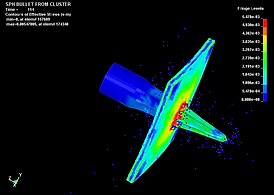George S. Dulikravich, Ph.D.
Profile

George S. Dulikravich, Ph.D.
Fellow AAM, Fellow ASME, Fellow RAeS, Associate Fellow AIAA
Dr. Dulikravich is a Cornell-trained aerospace engineer whose research expertise and interests are computational and analytical, spanning the fields of aerospace, mechanical, industrial, materials, biomedical and chemical engineering. Dr. Dulikravich´s international recognition has made him a visiting scholar in several top universities around the globe, a plenary/keynote lecturer in innumerous major international conferences and a member of the editorial boards of many well-ranked journals. He is an associate fellow of the American Institute of Aeronautics and Astronautics (AIAA) and a fellow of American Society of Mechanical Engineers (ASME), American Academy of Mechanics (AAM) and Royal Aeronautical Society (RAeS), and a recipient of several international awards.
Multidisciplinary Computational Research
Click on the below videos to view multidisciplinary advanced computational research involving several engineering disciplines such as fluid dynamics, solid mechanics, heat transfer, electro-magnetics and chemistry. The problems that could be numerically simulated and graphically visualized are analysis problems, inverse design and detection problems, and a variety of design optimization and control problems. Numerical techniques used in this software include meshless methods, finite differencing, finite elements, spectral elements, boundary elements, and finite volumes on structured, non-structured, and hybrid computational grids.


